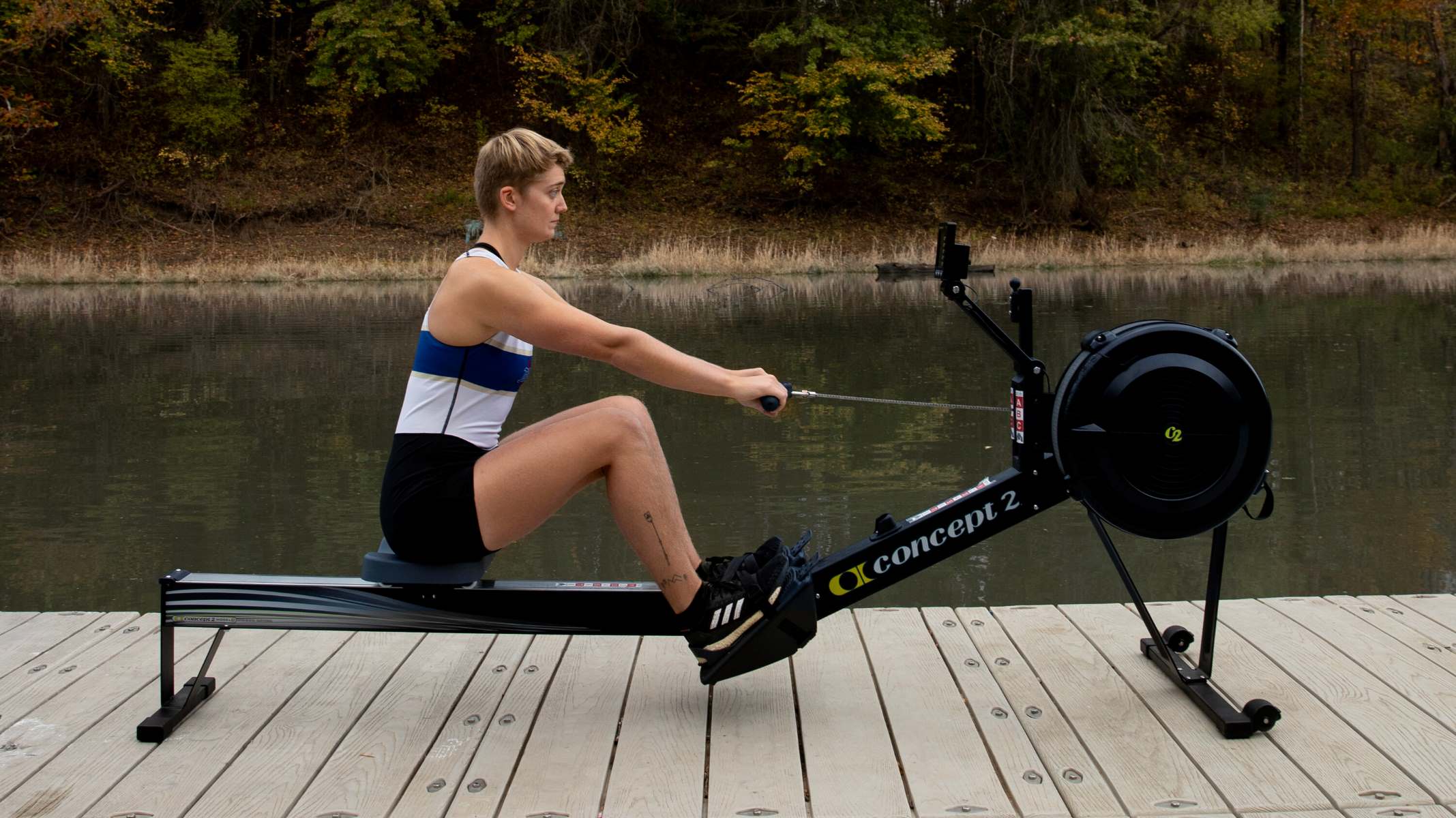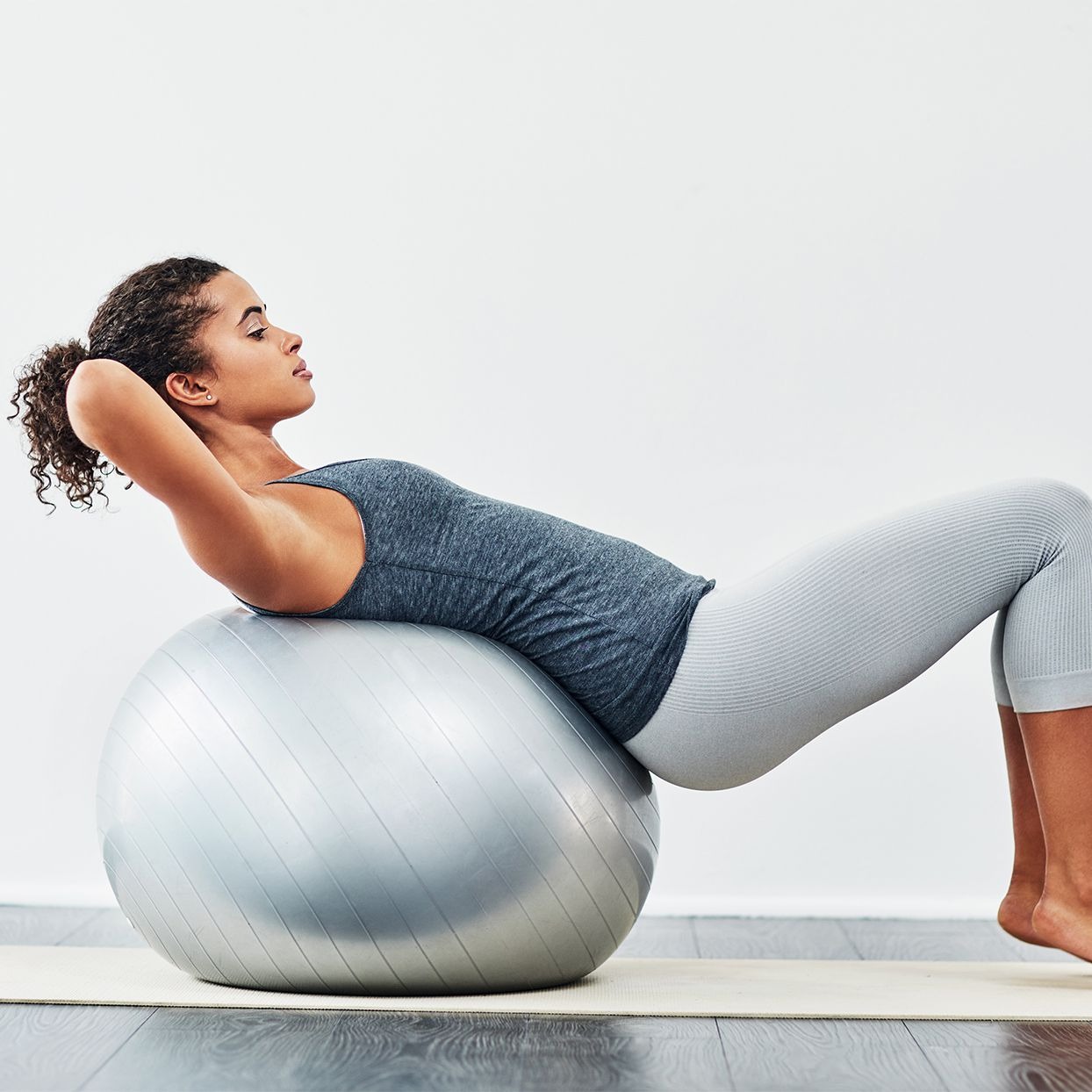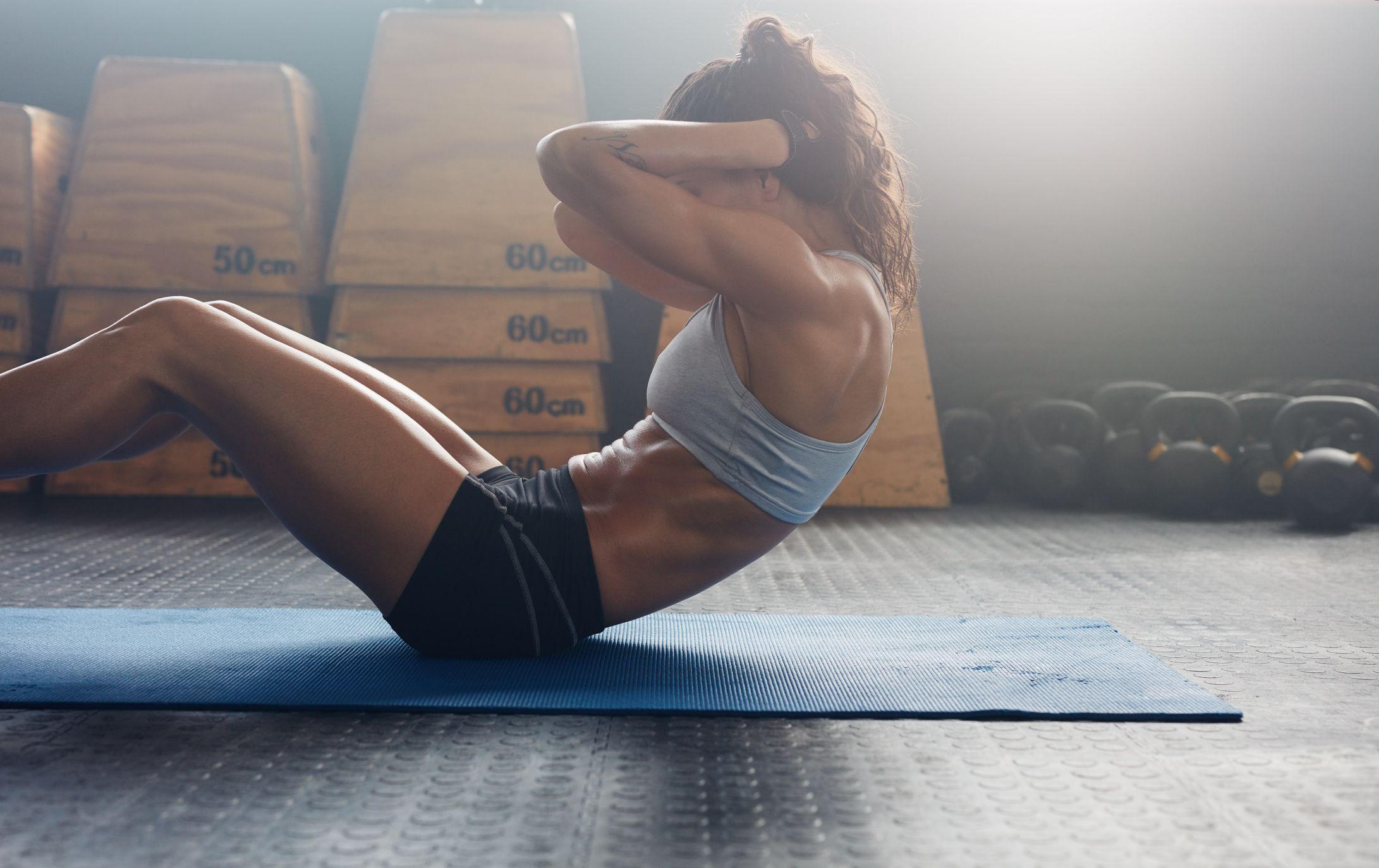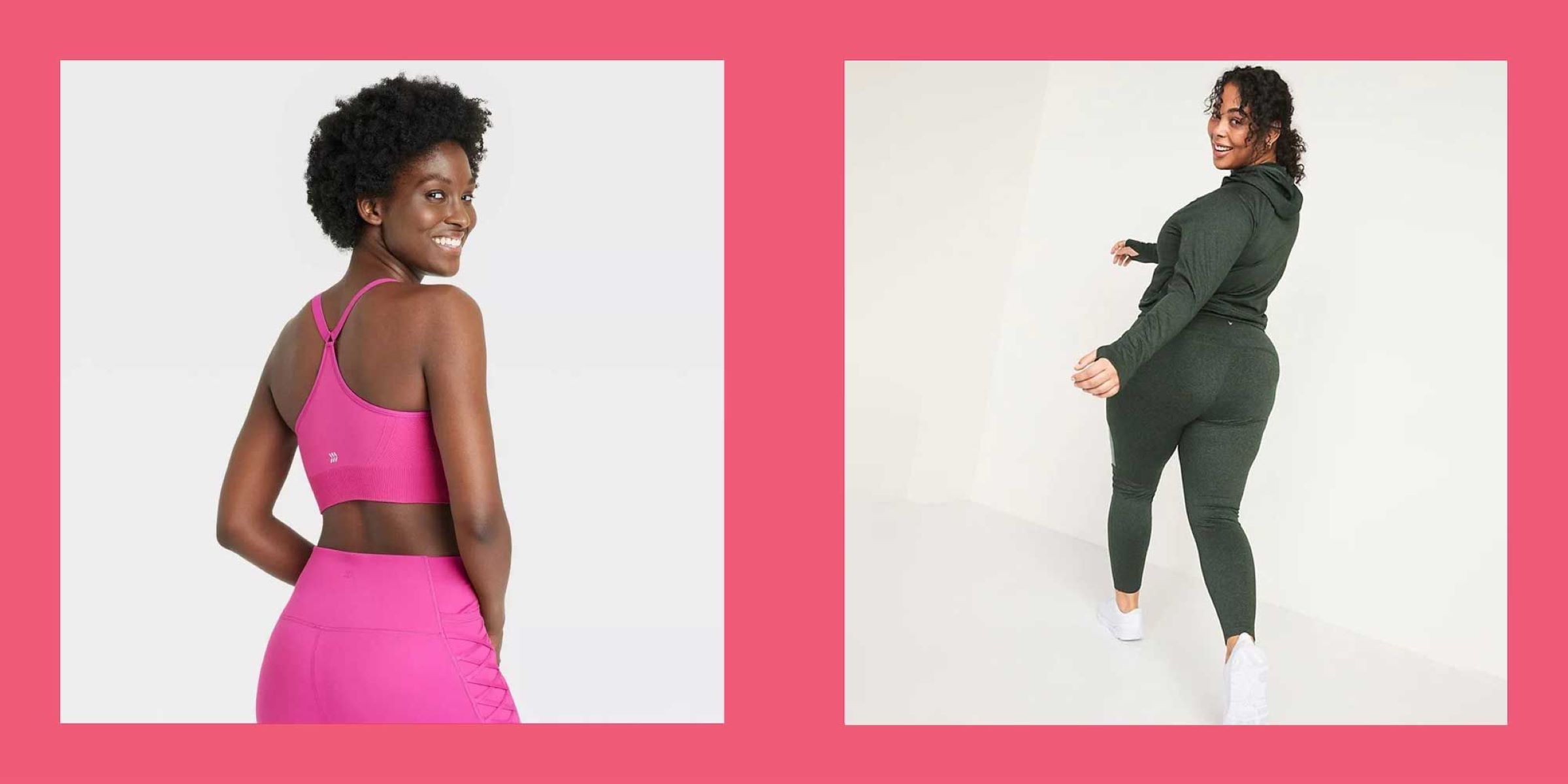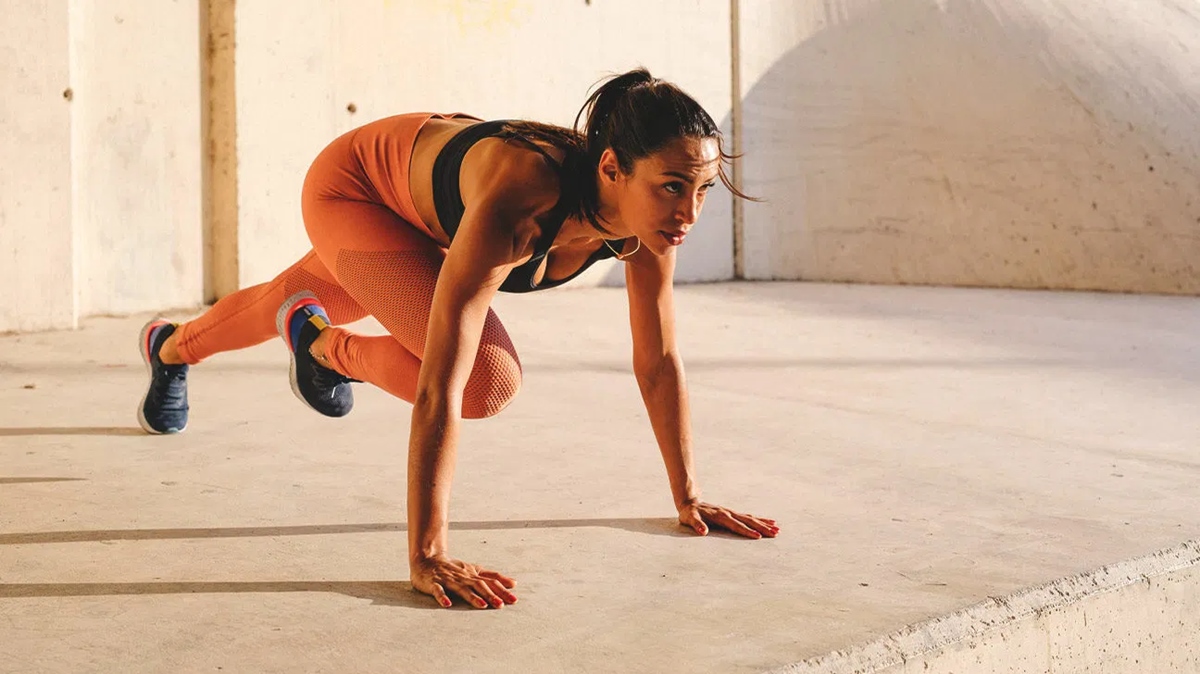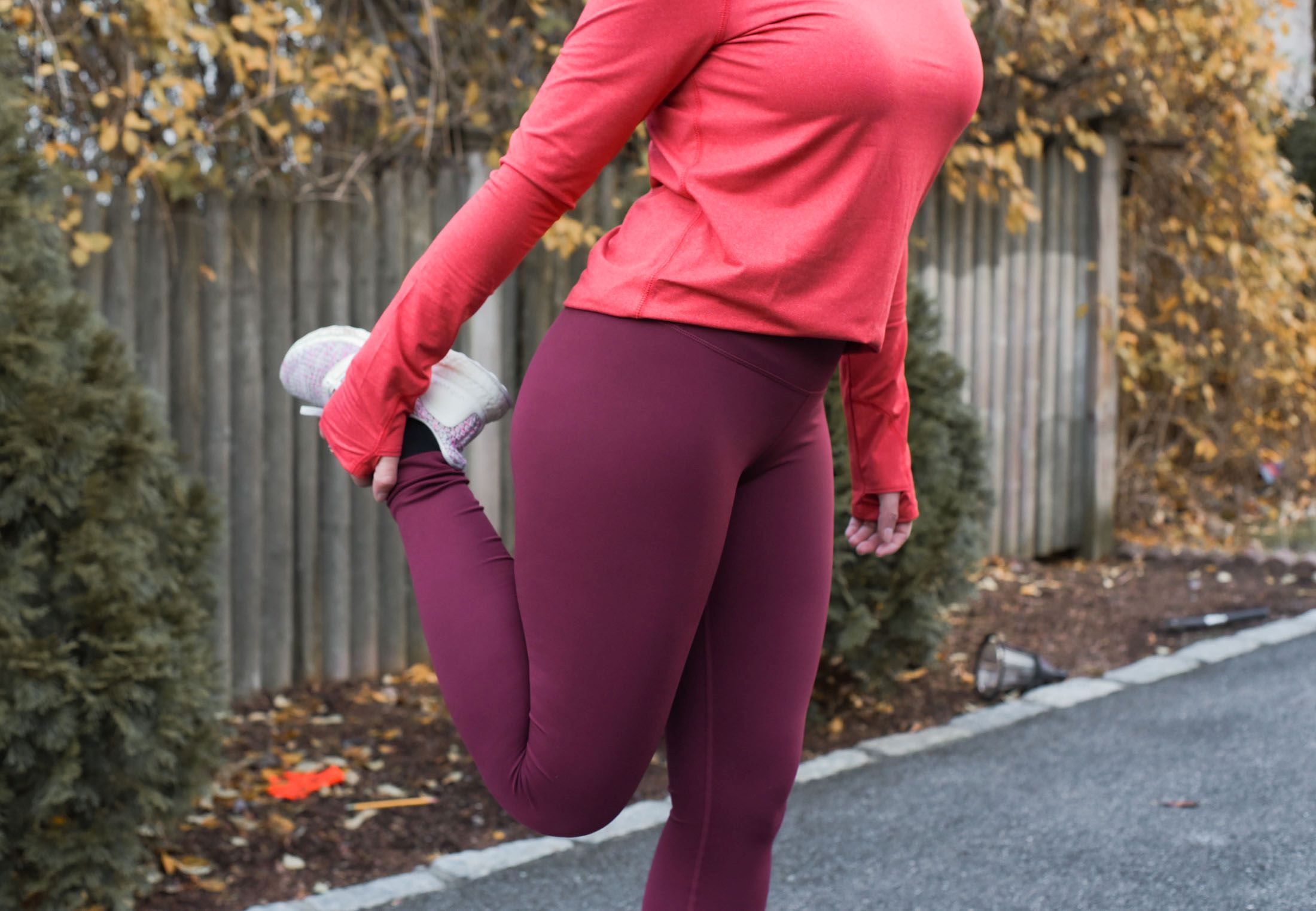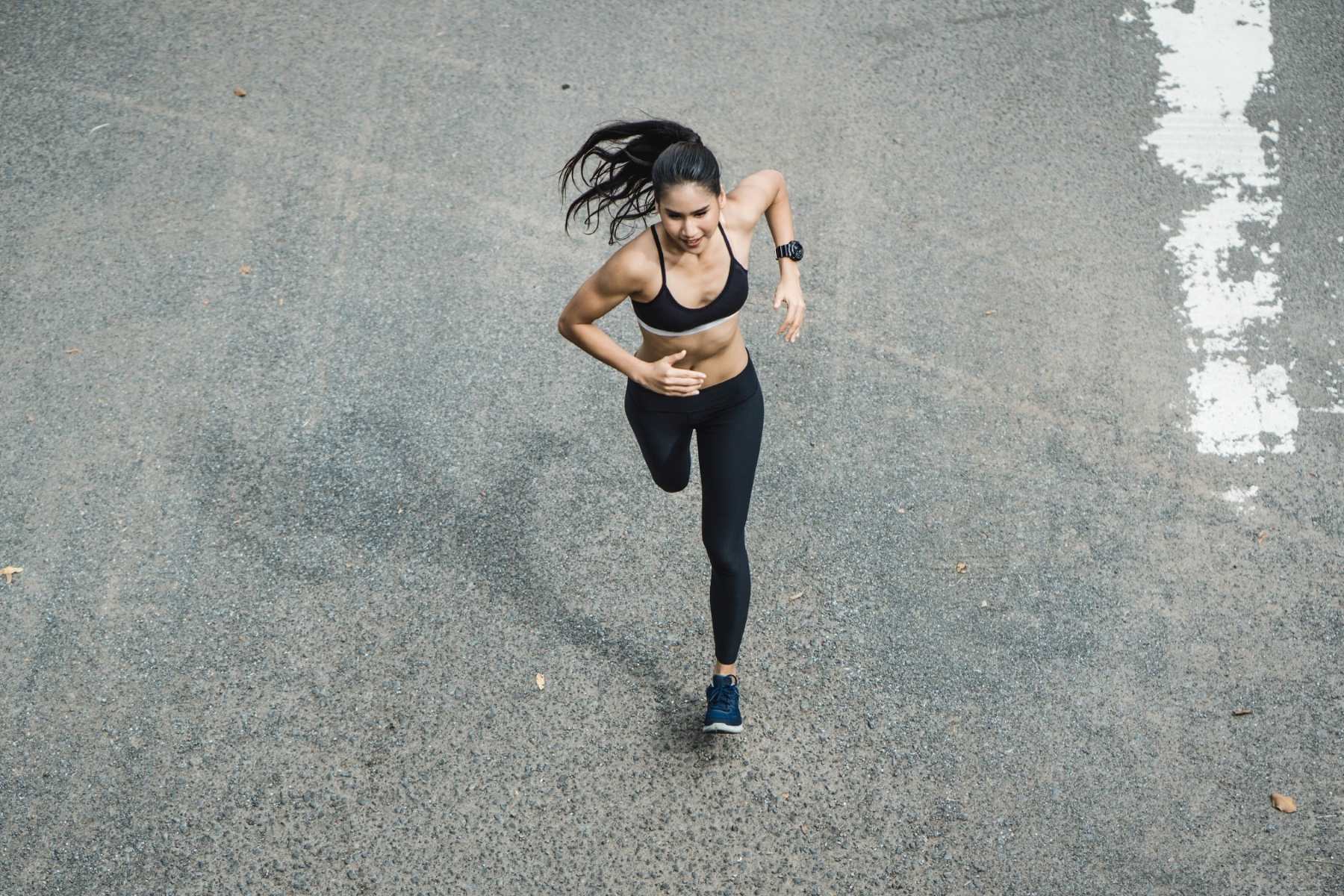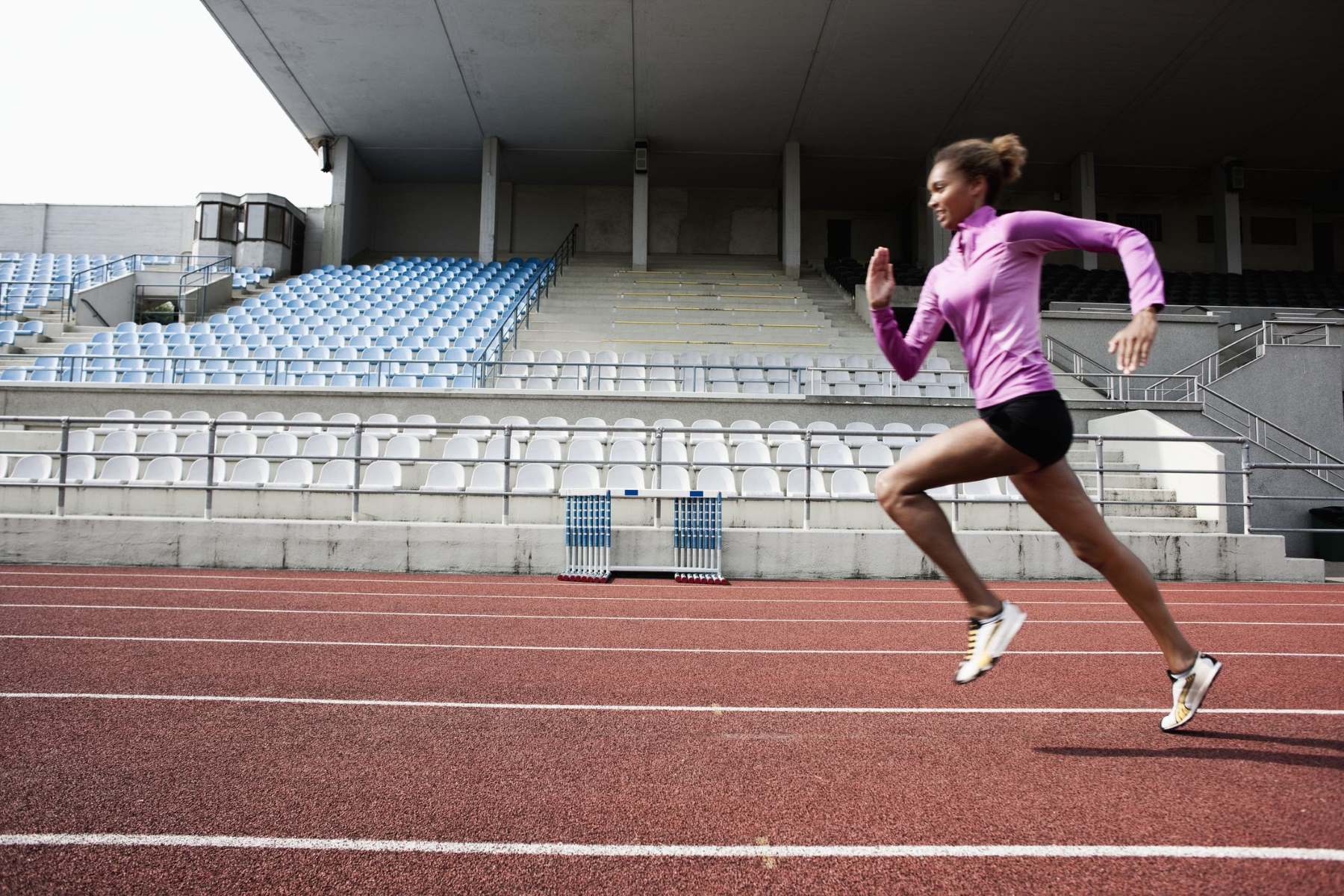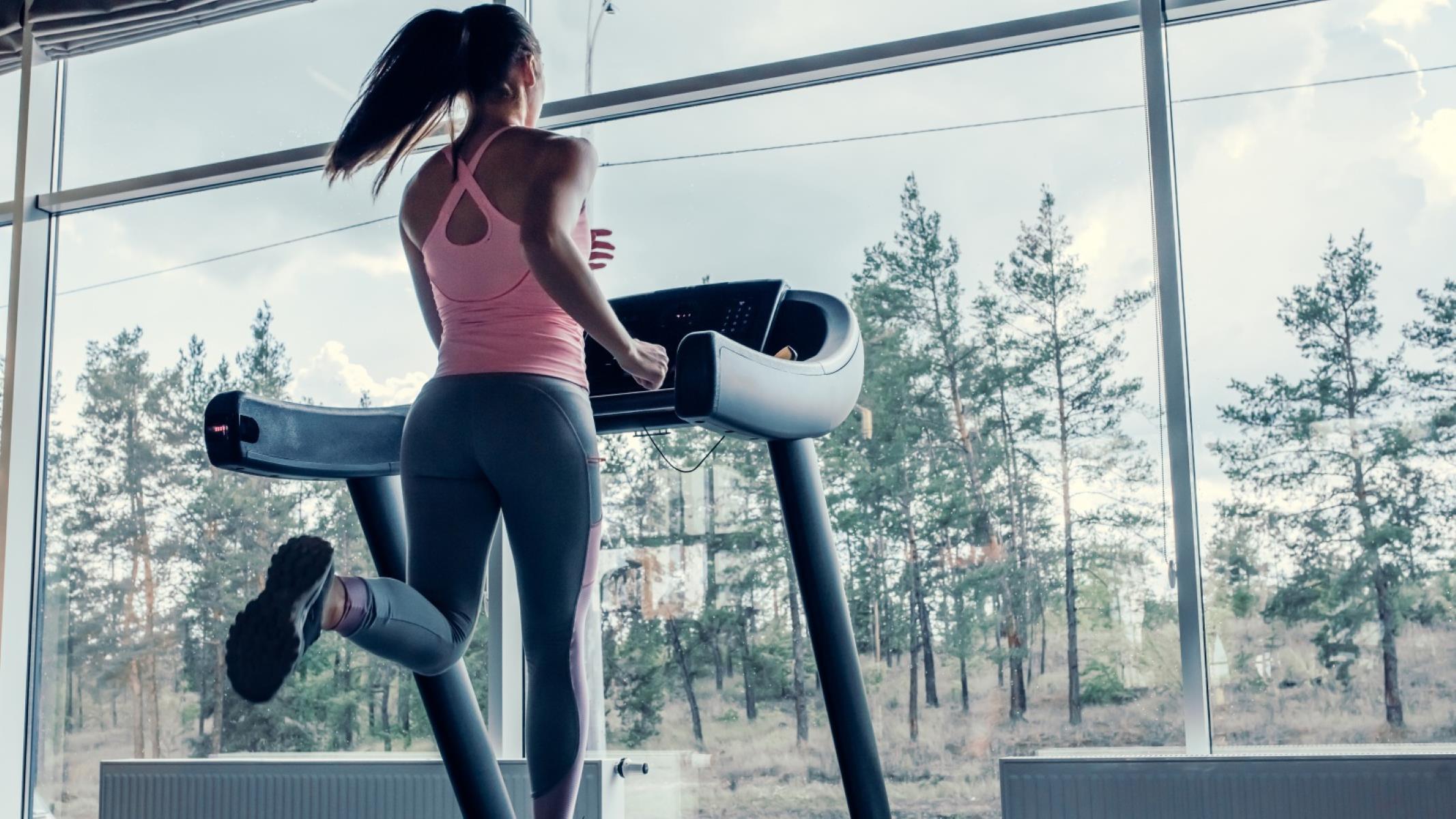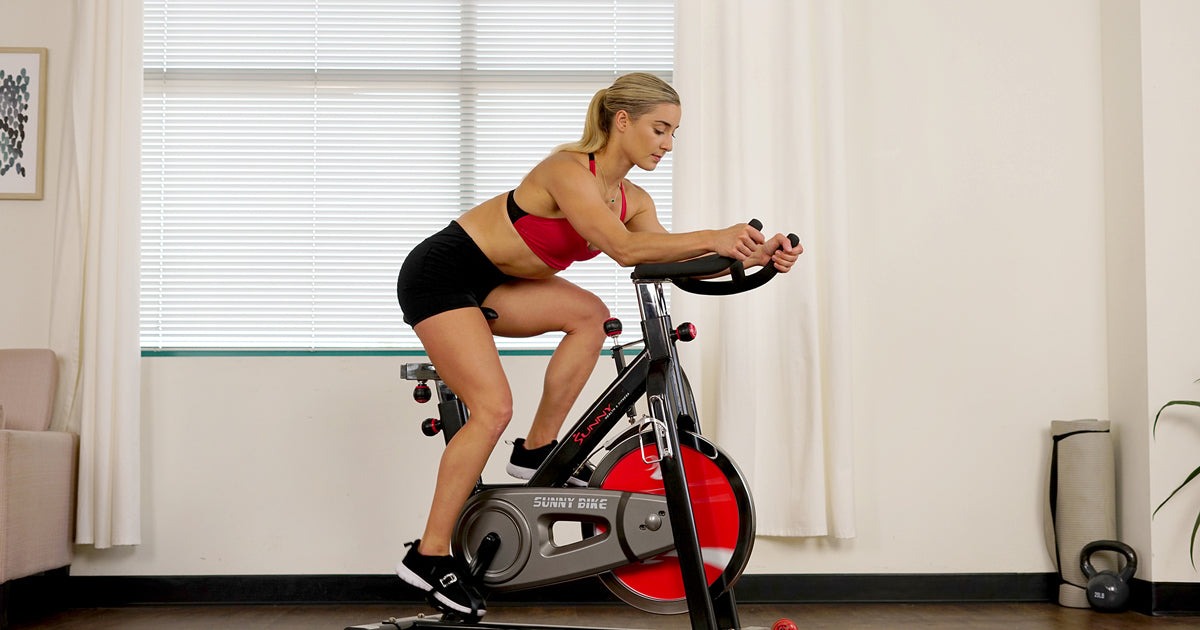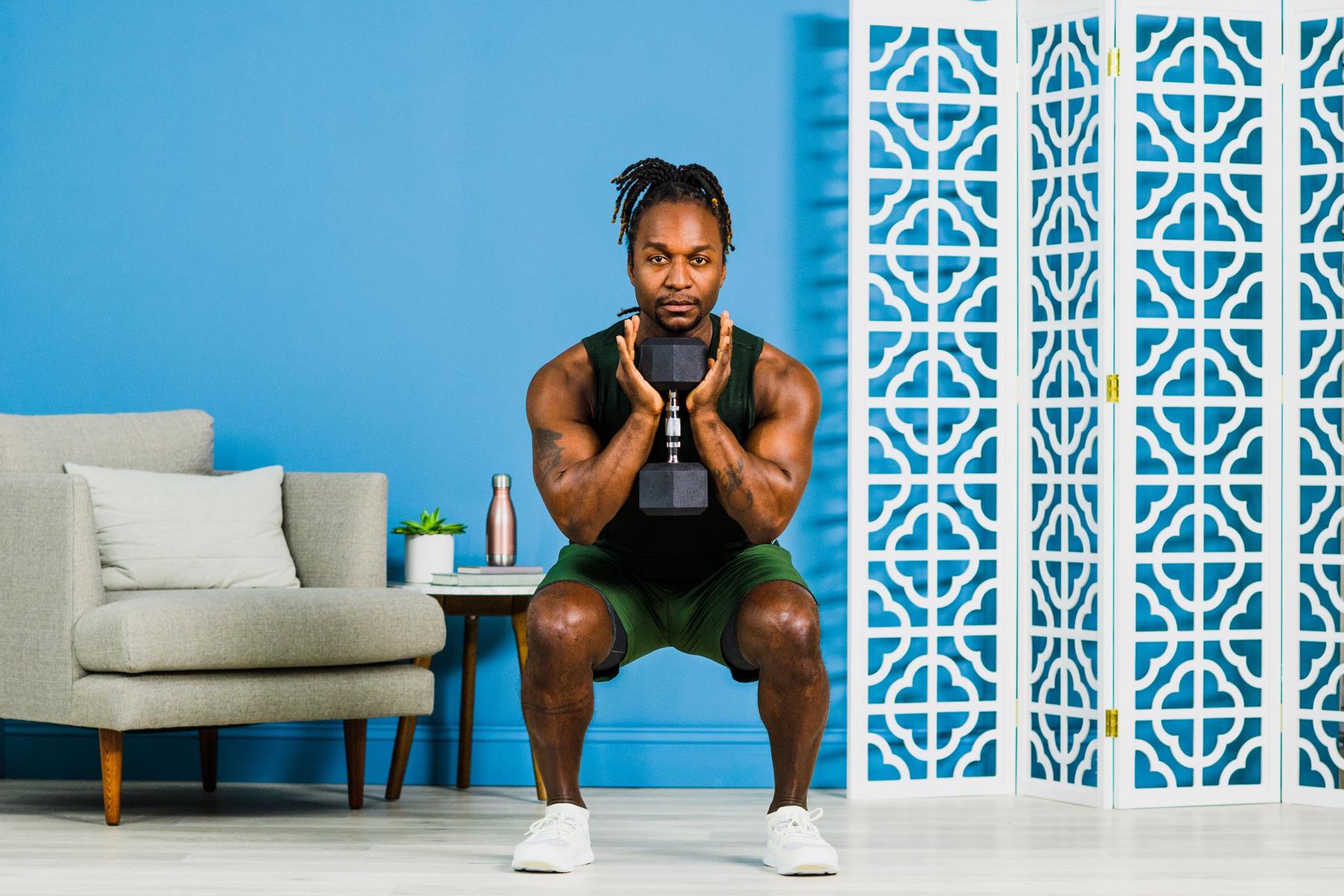

Featured
How To Workout Legs
Modified: January 22, 2024
Discover the best exercises for toning and strengthening your legs in our comprehensive workout guide. Get expert tips, techniques, and strategies to achieve featured legs.
Introduction
Are you looking to sculpt lean and strong legs? If so, incorporating leg workouts into your fitness routine is essential. Not only will a well-rounded leg workout help you achieve your aesthetic goals, but it will also enhance your overall strength and functional fitness.
Leg workouts are a crucial component of any fitness regimen, as they target some of the largest muscle groups in the body, including the quadriceps, hamstrings, glutes, and calves. By working these muscle groups regularly, you can improve your balance, stability, and power, which can be beneficial for various activities, from running and cycling to everyday movements like climbing stairs or lifting heavy objects.
In addition to the physical benefits, leg workouts can also contribute to cardiovascular health. Engaging in exercises that target the legs can raise your heart rate, improving circulation and boosting cardiovascular endurance.
Whether you are a beginner or an experienced fitness enthusiast, incorporating leg workouts into your exercise routine is highly recommended. In this article, we will explore various leg exercises, warm-up routines, and precautions to ensure a safe and effective leg workout session.
Benefits of Leg Workouts
Engaging in regular leg workouts offers a multitude of benefits for both your physical and overall well-being. Let’s explore some of the key advantages of incorporating leg exercises into your fitness routine:
- Increased Muscle Strength and Endurance: Leg workouts target major muscle groups such as the quadriceps, hamstrings, glutes, and calves. By consistently challenging these muscles, you can enhance their overall strength and endurance, enabling you to perform daily activities with greater ease and efficiency.
- Improved Balance and Stability: Strong legs contribute to better balance and stability, reducing the risk of falls and injuries. Leg exercises engage the core and lower body muscles, reinforcing the stability of the body’s foundation.
- Enhanced Athletic Performance: Whether you participate in sports or enjoy recreational activities, having strong legs can significantly enhance your performance. Leg workouts can improve your speed, agility, and power, allowing you to excel in activities like running, jumping, or playing sports.
- Fat Burning and Weight Loss: Leg exercises are typically compound movements that engage multiple muscles simultaneously. This can lead to a higher calorie burn during and after your workout, supporting your weight loss goals and promoting overall fat burning.
- Increased Bone Density: Weight-bearing leg exercises, such as squats and lunges, help strengthen bones and promote higher bone density. This is especially important for preventing conditions like osteoporosis, particularly in women.
- Boosted Metabolism: Leg workouts, due to their intensity and engagement of large muscle groups, can elevate your metabolic rate. A higher metabolism means your body can burn more calories at rest, assisting in weight management and maintaining a healthy body composition.
- Enhanced Functionality and Mobility: Performing leg exercises can improve your range of motion, flexibility, and overall mobility. This can make daily movements, such as bending, squatting, and walking up stairs, easier and more efficient.
- Positive Impact on Mental Health: Physical activity, including leg workouts, has been shown to have numerous mental health benefits. Regular exercise can boost mood, reduce stress, anxiety, and depression, and enhance overall cognitive function.
With these impressive benefits in mind, it’s clear that incorporating leg workouts into your fitness routine is advantageous for both your physical and mental well-being.
Important Precautions
Before diving into any leg workout routine, it’s important to take certain precautions to ensure your safety and minimize the risk of injury. Here are some crucial guidelines to keep in mind:
- Consult with a healthcare professional: If you have any pre-existing medical conditions or injuries, it’s essential to consult with a healthcare professional or a qualified fitness instructor before starting any new exercise program. They can provide personalized advice and recommendations based on your specific needs and abilities.
- Warm up properly: Before engaging in any intense leg exercises, it’s crucial to warm up your muscles and joints. This can be done through dynamic stretches, light cardio exercises, or foam rolling. A proper warm-up prepares your body for the workout and helps prevent injuries.
- Use proper form and technique: When performing leg exercises, it’s vital to maintain proper form and technique throughout. This ensures that you are targeting the intended muscle groups and reduces the risk of strain or injury. If you’re unsure about proper form, seek guidance from a qualified fitness professional.
- Start with lower weights and progress gradually: If you’re new to leg workouts or a particular exercise, start with lighter weights or bodyweight movements. Focus on mastering the form and gradually increase the resistance or weight as your strength and technique improve.
- Listen to your body: Pay attention to any pain or discomfort during your leg workouts. It’s essential to distinguish between muscular fatigue and actual pain. If something feels off or causes sharp or persistent pain, stop the exercise and seek guidance from a professional.
- Allow for proper recovery: Rest and recovery are vital components of any exercise program. Make sure to give your leg muscles enough time to recover between workouts to avoid overuse injuries. Incorporating rest days and adequate sleep into your routine is crucial for optimal performance and minimizing the risk of injury.
- Stay hydrated: Hydration is important to support your overall physical performance and prevent muscle cramps. Drink water before, during, and after your leg workouts to stay adequately hydrated.
- Modify exercises when necessary: If you have limitations or injuries, don’t hesitate to modify exercises to suit your needs. For example, you can use resistance bands or perform seated variations of certain leg exercises. Always prioritize your safety and listen to your body.
By following these precautions and guidelines, you can minimize the risk of injury and ensure a safe and effective leg workout experience.
Warm-up Exercises for Legs
A proper warm-up is essential to prepare your leg muscles for the workout ahead and prevent injuries. Here are some effective warm-up exercises that specifically target the legs:
- Leg swings: Stand next to a wall or support, and swing one leg forward and backward in a controlled motion. Repeat for 10-15 swings on each leg. This exercise helps activate and warm up the hip flexors and glutes.
- Walking lunges: Take a step forward with your right leg, lowering your hips until both knees are bent at a 90-degree angle. Push off the right foot and bring your left leg forward into the next lunge. Repeat for 10-12 lunges on each leg. This exercise engages the quadriceps, hamstrings, and glutes.
- Bodyweight squats: Stand with your feet shoulder-width apart and slowly lower your hips down as if sitting back into an imaginary chair. Keep your chest lifted and your weight on your heels. Rise back up to the starting position and repeat for 12-15 repetitions. Squats engage the quadriceps, hamstrings, and glutes while improving hip mobility.
- High knees: Stand with your feet hip-width apart and jog in place, lifting your knees up toward your chest as high as possible. Aim for 30 seconds of high knees to increase heart rate and warm up the leg muscles.
- Leg swings: Stand facing a sturdy object or wall and swing one leg out to the side, then across your body in a controlled motion. Repeat for 10-15 swings on each side. This exercise targets the hip abductors and adductors, improving hip mobility and stability.
- Calf raises: Stand with your feet hip-width apart and slowly rise up onto your toes, lifting your heels off the ground. Lower back down and repeat for 12-15 repetitions. Calf raises warm up the calves and improve ankle mobility.
- Seated leg extensions: Sit on a chair or bench with your back straight and extend one leg out in front of you, flexing your foot. Hold for a few seconds before lowering your leg back down. Repeat for 10-12 repetitions on each leg. This exercise activates the quadriceps and prepares them for more intense movements.
- Ankle circles: Sit or stand with your feet flat on the ground and slowly rotate your ankles in a circular motion, alternating between clockwise and counterclockwise. Perform 10-15 circles in each direction to warm up the ankle joints.
Performing these warm-up exercises before your leg workout will effectively increase blood flow to the muscles, improve flexibility, and prepare your body for the upcoming exercises.
Squats
Squats are a fundamental compound exercise that targets multiple muscle groups in the lower body, including the quadriceps, hamstrings, glutes, and calves. They are highly effective for building strength, power, and overall lower body development. Here’s how to perform squats with proper form:
- Starting Position: Stand with your feet slightly wider than shoulder-width apart. Keep your toes pointed slightly outward, and your chest lifted. Engage your core muscles to maintain stability throughout the movement.
- Execution: Initiate the movement by bending your knees and lowering your hips down as if you’re sitting back into a chair. Keep your weight on your heels and ensure that your knees stay in line with your toes.
- Depth: Aim to lower your body until your thighs are parallel to the ground or slightly below. However, make sure to maintain proper form and only squat as low as your flexibility allows. Avoid letting your knees collapse inward or rounding your back.
- Push through the Heels: Drive through your heels and straighten your legs to return to the starting position. Squeeze your glutes at the top of the movement to fully engage the muscles in your lower body.
- Breathing: Inhale as you lower yourself into the squat position and exhale as you push through your heels to stand back up.
- Variations: There are several squat variations you can incorporate to add variety and challenge to your workouts. Some popular variations include goblet squats, sumo squats, and pistol squats.
Squats are a versatile exercise that can be performed with various equipment, such as barbells, dumbbells, or simply using your bodyweight. When adding resistance, start with lighter weights and gradually increase the load as your strength improves.
Integrating squats into your leg workout routine will promote functional strength, improve lower body muscle development, and enhance overall athletic performance. Remember to maintain proper form, listen to your body, and gradually increase the intensity to achieve the best results.
Lunges
Lunges are another effective leg exercise that targets the quadriceps, hamstrings, glutes, and calves. They help improve lower body strength, stability, and balance. Lunges can be performed in various ways, allowing you to target different muscle groups and add variety to your leg workout routine. Here’s how to do a basic lunge:
- Starting Position: Stand tall with your feet hip-width apart. Engage your core for stability and maintain an upright posture throughout the exercise.
- Execution: Take a step forward with your right foot, lowering your body until both knees are bent at a 90-degree angle. Make sure your front knee doesn’t extend past your toes, and your back knee is close to but not touching the ground.
- Depth: Lower your body until your back knee is just above the ground or lightly touching it. Keep your weight evenly distributed between your front and back legs.
- Push through the Heel: Push through your front heel to return to the starting position and repeat the movement on the other leg. Imagine using your front leg to propel yourself back rather than relying on the back leg.
- Breathing: Inhale as you lower yourself into the lunge position and exhale as you push back up to the starting position.
- Variations: To add variety and challenge, you can try different lunge variations such as walking lunges, reverse lunges, or lateral lunges.
Lunges can be performed with your bodyweight or by holding dumbbells or a barbell for added resistance. Start with a weight or variation that challenges you within your comfort level and gradually increase the intensity as your strength improves.
Adding lunges to your leg workout routine can help improve lower body strength, enhance muscle definition, and enhance functional movement patterns. Remember to focus on proper form, maintain control throughout the exercise, and listen to your body to avoid any discomfort or strain.
Deadlifts
Deadlifts are a compound exercise that primarily target the muscles in your posterior chain, including the glutes, hamstrings, and lower back. They are highly effective for building overall strength, improving muscle definition, and enhancing your ability to perform daily activities. Here’s how to perform a standard deadlift:
- Starting Position: Stand with your feet hip-width apart, toes pointing slightly outward. Bend down, hinge at the hips, and grip the barbell with an overhand or mixed grip slightly wider than shoulder-width apart.
- Execution: Keeping your back straight, engage your core and drive through your heels as you lift the barbell off the ground. As you stand up, extend your hips and knees, pulling the barbell up along your legs.
- Full Extension: Stand tall at the top of the movement, making sure to squeeze your glutes and maintain a neutral spine.
- Lowering the Weight: Lower the barbell back down to the starting position while maintaining control and keeping your back straight. Remember to hinge at the hips and not round your back.
- Breathing: Inhale as you lower the weight and exhale as you stand up or lift the weight.
- Variations: There are several deadlift variations that you can incorporate into your leg workout routine, such as sumo deadlifts, Romanian deadlifts, or single-leg deadlifts.
When performing deadlifts, it is crucial to prioritize proper form and technique to avoid injury. Start with lighter weights and gradually increase the load as your strength and confidence improve. If you are new to deadlifts, consider seeking guidance from a qualified professional to ensure proper execution.
Deadlifts are an excellent exercise for strengthening your posterior chain, improving posture, and increasing overall functional strength. They can be a valuable addition to your leg workout routine, providing a challenging and rewarding exercise for your lower body muscles.
Leg Press
The leg press is a popular machine-based exercise that targets the muscles of the lower body, including the quadriceps, hamstrings, and glutes. It provides an effective way to build strength and develop muscular endurance in the legs. Here’s how to perform the leg press:
- Starting Position: Sit on the leg press machine with your back pressed against the backrest and your feet on the foot platform. Adjust the seat and foot position so that your knees are at a 90-degree angle when your feet are shoulder-width apart on the platform.
- Execution: Push against the foot platform to extend your legs and straighten your knees, moving the platform away from your body. Keep your back flat against the backrest and avoid locking out your knees.
- Depth: Lower the weight by bending your knees and allowing the platform to come closer to your body. Go as low as your flexibility allows while maintaining control and avoiding excessive strain on your joints.
- Pushing back up: Push against the foot platform to drive it away from your body and extend your legs back to the starting position.
- Breathing: Inhale as you lower the weight and exhale as you push back up, maintaining a steady breathing pattern throughout the exercise.
- Adjusting weight: Use the weight stack or weight sled to adjust the resistance according to your fitness level and goals.
The leg press machine provides a controlled and stable environment to focus on targeting the leg muscles effectively. It can be a suitable option for beginners or individuals with specific limitations or injuries.
When using the leg press machine, it’s essential to prioritize proper form, control, and avoid using momentum or excessive strain. Start with a lighter weight and gradually increase the load as your strength improves.
Incorporating the leg press into your leg workout routine can help develop lower body strength, increase muscle size, and enhance your overall leg strength and endurance.
Leg Curls
Leg curls are an effective isolation exercise that primarily targets the hamstrings, the muscles located at the back of your thighs. This exercise helps to strengthen and develop the hamstring muscles, promoting better balance and stability in your legs. Leg curls can be performed using a machine or resistance bands. Here’s how to perform leg curls:
- Starting Position: Begin by lying face down on a leg curl machine or on a mat if you’re using resistance bands. Place your ankles under the leg curl pad or secure the resistance bands around your ankles.
- Execution: Bend your knees, flexing your legs towards your glutes while keeping your core engaged. Keep your upper body stable and prevent it from lifting off the mat or machine.
- Full Contraction: Squeeze your hamstrings at the top of the movement, fully contracting them for a brief moment before slowly returning to the starting position.
- Breathing: Inhale as you bend your knees and exhale as you extend your legs back to the starting position.
- Variations: If you don’t have access to a leg curl machine, you can perform lying leg curls using resistance bands or a stability ball.
When performing leg curls, it’s important to maintain proper form and avoid using excessive momentum or swinging movements. Focus on the mind-muscle connection and really engage your hamstrings throughout the exercise.
Leg curls are an effective exercise to specifically target the hamstring muscles and can help improve overall leg strength and stability. By incorporating leg curls into your leg workout routine, you can develop well-rounded lower body strength and enhance your athletic performance.
Calf Raises
Calf raises are a simple yet effective exercise that targets the calf muscles, specifically the gastrocnemius and soleus muscles. They help strengthen and tone the calves, providing stability and power for activities that involve the lower legs, such as running, jumping, and walking. Here’s how to perform calf raises:
- Starting Position: Stand tall with your feet hip-width apart, ensuring your weight is evenly distributed.
- Execution: Slowly rise up onto the balls of your feet, lifting your heels off the ground while maintaining a straight posture. Keep your core engaged for stability and balance.
- Full Contraction: Hold the position for a brief moment at the top, ensuring you feel a strong contraction in your calf muscles.
- Lowering Phase: Gradually lower your heels back down to the starting position, allowing your calf muscles to stretch.
- Breathing: Inhale as you lower your heels and exhale as you rise up onto the balls of your feet.
- Variations: To add variety and challenge, you can perform calf raises on a raised surface such as a step, use dumbbells for added resistance, or perform single-leg calf raises to focus on each calf individually.
When performing calf raises, it’s important to focus on controlled movements, avoid using momentum, and maintain proper form throughout the exercise. To increase the intensity, you can gradually increase the number of repetitions or incorporate resistance, such as using a weighted barbell or holding dumbbells.
Including calf raises in your leg workout routine can help improve calf strength, enhance muscle definition, and contribute to better lower leg stability and balance. Strong calf muscles are essential for various activities and can help prevent injuries during sports and everyday movements.
Step-ups
Step-ups are a versatile and functional leg exercise that targets the quadriceps, hamstrings, and glutes. This exercise simulates the movement of climbing stairs or stepping onto an elevated platform, making it highly effective for building lower body strength and improving overall stability. Here’s how to perform step-ups:
- Starting Position: Stand facing a sturdy elevated platform or step. Position one foot firmly on the step, ensuring your entire foot is in contact with the surface.
- Execution: Push through your heel and activate your glutes and quadriceps to lift your body up onto the step. Drive your knees forward and upward, maintaining a controlled and balanced movement.
- Full Extension: Once you’re fully on the step, squeeze your glutes at the top to maximize muscle activation. Keep your core engaged and maintain an upright posture throughout the exercise.
- Lowering Phase: Carefully step back down, leading with the same leg that initiated the movement. Maintain control and avoid the temptation to rush the descent.
- Breathing: Inhale as you step up, exhale as you lower your foot back down to the starting position.
- Variations: To increase the challenge, you can hold dumbbells or a barbell across your shoulders during the exercise. Additionally, you can perform step-ups with alternating legs or using a higher step for an added challenge.
Step-ups are a versatile exercise that can be modified to suit your fitness level and goals. They can be performed almost anywhere with a sturdy step or platform, making them accessible for both gym and home workouts.
By incorporating step-ups into your leg workout routine, you can improve lower body strength, enhance balance and coordination, and increase functional fitness. They are particularly beneficial for activities that involve stair climbing or stepping movements, such as hiking, running, or everyday tasks.
Bulgarian Split Squats
Bulgarian split squats are a highly effective unilateral leg exercise that primarily targets the quadriceps, hamstrings, glutes, and calves. This exercise not only helps build leg strength and muscle definition but also improves balance and stability. Here’s how to perform Bulgarian split squats:
- Starting Position: Stand with your back facing away from a bench or elevated surface. Place the top of one foot onto the bench, keeping the front foot a couple of feet in front and maintaining a hip-width stance.
- Execution: Keeping your chest lifted and core engaged, lower your body by bending your front knee and lowering your back knee towards the ground. Aim for a 90-degree angle with your front leg, ensuring that your knee doesn’t extend past your toes.
- Depth: Lower your body until your back knee lightly touches or hovers just above the ground, allowing a full stretch in the front leg’s quadriceps.
- Pushing back up: Push through the heel of your front foot to return to the starting position. Squeeze your glutes at the top for maximum contraction.
- Breathing: Inhale as you lower your body and exhale as you push back up to the starting position.
- Variations: To increase the challenge, you can hold dumbbells or a barbell on your shoulders or in each hand. Alternatively, you can perform Bulgarian split squats using a TRX suspension trainer or resistance bands for added stability and resistance.
Bulgarian split squats provide a unilateral strength training stimulus, helping to address any imbalances between the left and right leg. This exercise also activates the core muscles to maintain stability throughout the movement.
By incorporating Bulgarian split squats into your leg workout routine, you can improve lower body strength, enhance muscle balance and symmetry, and develop stability for a wide range of activities and sports.
Standing Calf Raises
Standing calf raises are a great exercise for targeting the calf muscles, specifically the gastrocnemius and soleus. This exercise helps to strengthen and define the calves, improving lower leg stability and performance in activities like running, jumping, and walking. Here’s how to perform standing calf raises:
- Starting Position: Stand tall with your feet hip-width apart, ensuring your weight is evenly distributed.
- Execution: Slowly rise up onto the balls of your feet, lifting your heels off the ground. Maintain a straight posture and engage your core for stability.
- Full Contraction: Hold the position at the top, making sure to squeeze your calf muscles for a brief moment to maximize the contraction.
- Lowering Phase: Gradually lower your heels back down until they are just slightly below the level of the platform or ground. Allow your calf muscles to stretch without completely relaxing at the bottom of the movement.
- Breathing: Inhale as you lower your heels and exhale as you rise up onto the balls of your feet.
- Variations: To add variety and challenge, you can perform standing calf raises on a raised surface such as a step or use a calf raise machine at the gym. You can also perform single-leg standing calf raises to focus on each calf individually.
Ensure that you maintain control throughout the exercise and avoid using momentum or excessive bouncing movements. Focus on contracting your calf muscles and feeling the burn in each repetition.
Standing calf raises are an effective exercise to target and strengthen the calf muscles. By incorporating them into your leg workout routine, you can improve lower leg stability, increase calf muscle definition, and enhance your overall leg strength.
Glute Bridges
Glute bridges are a fantastic exercise for targeting the glutes, as well as engaging the hamstrings and lower back muscles. This exercise helps to strengthen and tone the gluteal muscles, improving hip stability and enhancing overall lower body strength. Here’s how to perform glute bridges:
- Starting Position: Lie on your back with your knees bent, feet flat on the ground, and arms by your sides.
- Execution: Engage your glutes and core muscles as you lift your hips off the ground by pushing through your heels. Keep your back flat against the floor and focus on squeezing your glutes at the top of the movement.
- Full Contraction: Pause at the top of the movement to ensure a strong contraction in your glutes before slowly lowering your hips back down to the starting position.
- Breathing: Inhale as you lower your hips and exhale as you lift your hips off the ground.
- Variations: To make the exercise more challenging, you can place a resistance band just above your knees or hold a weight plate across your hips. Alternatively, you can perform single-leg glute bridges by extending one leg straight out and lifting with the opposite leg.
Ensure that you maintain a stable and controlled movement throughout the exercise, focusing on properly activating your glute muscles. Avoid arching your lower back excessively and keep your core engaged for stability.
Glute bridges are an effective exercise for strengthening the glutes, improving hip stability, and enhancing overall lower body strength. By incorporating glute bridges into your leg workout routine, you can achieve a firmer and more well-rounded lower body.
Conclusion
Incorporating leg workouts into your fitness routine is crucial for developing strong and toned legs, enhancing overall lower body strength, and improving functional fitness. The variety of leg exercises discussed in this article provides a comprehensive approach to building and sculpting your leg muscles.
From squats and lunges to deadlifts and leg presses, each exercise targets different muscle groups, ensuring a well-rounded leg workout. It’s important to always prioritize proper form and technique to maximize results and minimize the risk of injury.
Additionally, warming up before your leg workout is essential to prepare your muscles and joints for the intensity of the exercises. This can be achieved through dynamic stretches and light cardio activities to increase blood flow and flexibility in the leg muscles.
Remember to listen to your body and adjust the exercises to suit your fitness level and goals. Gradually increase the intensity and resistance as your strength improves, and always consult with a healthcare professional if you have any pre-existing medical conditions or injuries.
By regularly incorporating leg workouts into your fitness routine, you can experience numerous benefits such as increased muscle strength, improved balance and stability, enhanced athletic performance, and boosted metabolism. Furthermore, these exercises contribute to better bone density, enhanced functionality and mobility, and positively impact mental health.
Whether you’re a beginner or an experienced fitness enthusiast, targeting your leg muscles through a variety of exercises will help you achieve your desired leg strength, tone, and functional fitness. So lace up your sneakers, grab your weights, and get ready to take your leg workout to the next level!
